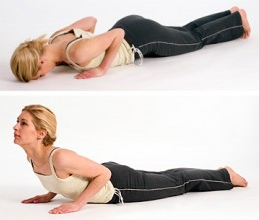According to the Bureau of Labor Statistics, tendonitis causes more than 70,000 people to miss work per year. This is just one of many reasons why it is important to understand the symptoms of tendonitis so that you can avoid not only the pain but the inconvenience it...
LATEST BLOGS
Husband and Wife of 54 Years Undergo Joint Replacement Surgeries On The Same Day
Premier Orthopaedics surgeon, Dr. Jonathan Garino, performed back-to-back procedures on a couple who have been married for 54 years! They shared their same-day surgery journey at the MUVE Center with @6ABC. Watch the incredible story below. Read the full ABC6 story...
What are Non-Surgical Treatment Options for a Herniated Disc
The spine consists of 26 bones called vertebrae and between them are cushion-like pads called “intervertebral discs”. The discs serve as shock absorbers for the vertebrae and help provide stability to the spine. When one of these intervertebral discs loses its normal...
Tips for Keeping Kids with Broken Bones and Casts Busy

As a parent, it can be especially difficult to keep children entertained when they are in a cast and healing from a broken bone. After dealing with the initial pain that goes along with a broken bone, children typically bounce back quickly and want to resume their normal routines. Unfortunately, sometimes having to wear a cast can make that very challenging. It could be difficult for your child to stay entertained when one of their limbs is restrained by a cast. However, a broken bone doesn’t mean that your child can’t still participate in activities they enjoy.
Of course movies and shows are great for the first few days of healing, but you don’t want your child’s eyes glued to the television the whole time they’re recovering. If you’re struggling to keep your child entertained while they’re restricted by a cast, check out some of the following tips to help them stay busy.
Talk to Your Doctor
First and foremost, it’s crucial to talk with your doctor about the specific limitations you need to observe and what activities are safe for your child while they are wearing a cast. The last thing you want is to allow your child to be involved in an activity that could make their injury worse and cause more pain. In general, it’s best to stay away from contact sports where your child could collide with another player. Other activities that should be avoided include running, biking, roller skating, and skateboarding due to the risk of falling and reinjury.
Walking or Hiking
If your child is still able to use their legs, walking or hiking is a great activity that will get your child out of the house for some fresh air and to be immersed in nature. This will allow your child to get some fresh air and do something exciting after being cooped up in the house for too long. Check out a new park, hiking trail, or nature center to make the outing extra special.
Museums
Museums are educational and often have fun exhibits that you and your child can explore together. Whether it’s a museum of art or science, you’re bound to have hours of fun and learn a little something along the way. As an added bonus, museums are typically wheelchair accessible in the even that your child broke their leg.
Yoga
Yoga is an activity based on smooth movements and stretches and doesn’t require jarring activity that could potentially cause a reinjury. Find yoga poses that don’t involve your child’s injured limb and act as a yoga teacher to help them perform these exercises. This is a great way for your child to relax, unwind, and strengthen muscles in other parts of the body.
Use these tips to help keep your child engaged during a long recovery period. After the pain from the initial injury subsides, your child will be thrilled to incorporate some of these fun activities into their recovery period.
If your child has experienced an injury and you’re in need of an experienced physician, click here to set up a consultation with a doctor from Premier Orthopaedics. The physicians at Premier Orthopaedics are dedicated to providing comprehensive health care to relieve pain and returning patients to their daily lives.
For more information on what you can do to prevent fractures and fracture treatment methods, click here to download our eBook, Understanding Fracture Care: Causes, Diagnosis and Treatment.


